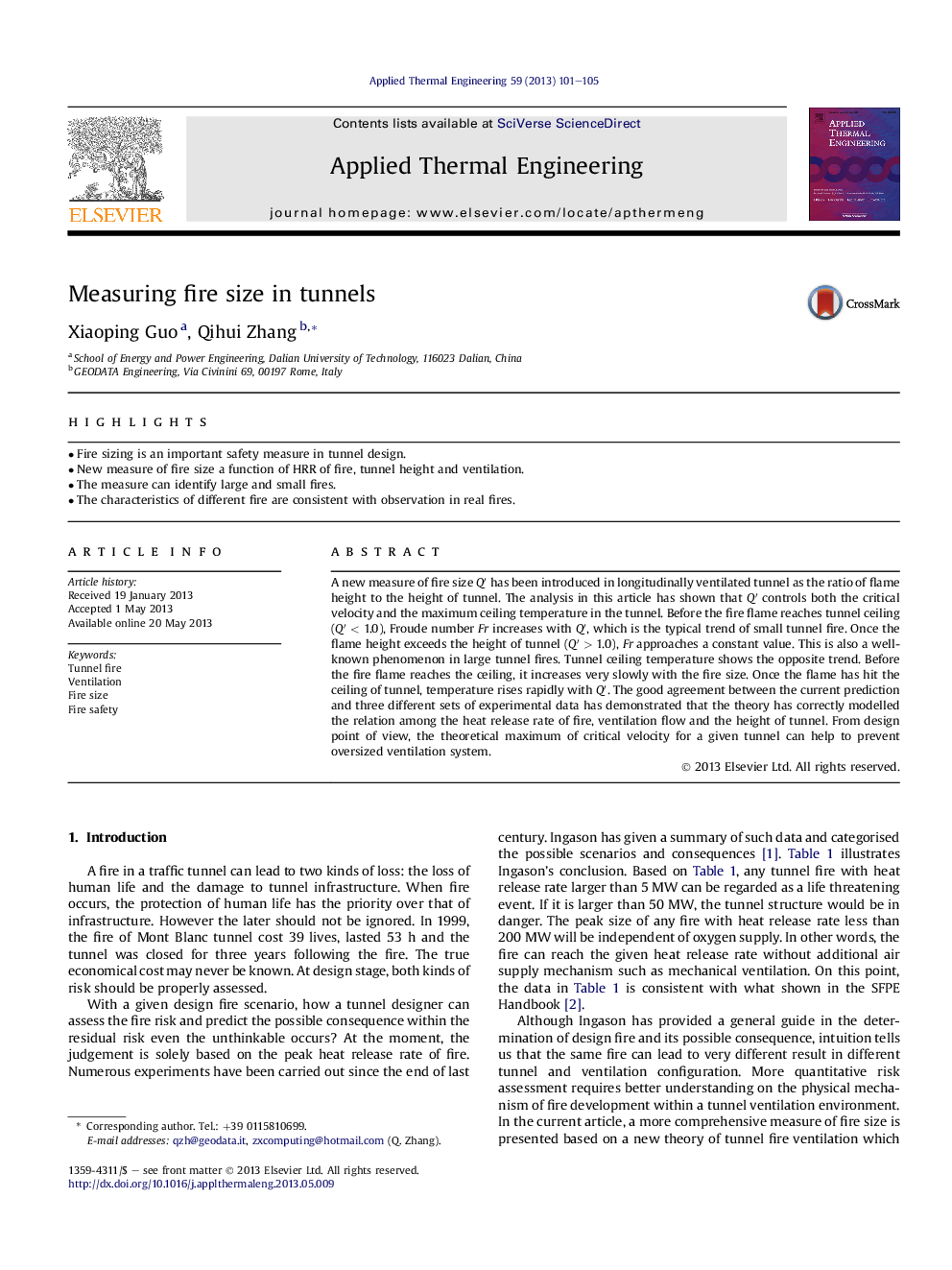| Article ID | Journal | Published Year | Pages | File Type |
|---|---|---|---|---|
| 7049972 | Applied Thermal Engineering | 2013 | 5 Pages |
Abstract
A new measure of fire size Qâ² has been introduced in longitudinally ventilated tunnel as the ratio of flame height to the height of tunnel. The analysis in this article has shown that Qâ² controls both the critical velocity and the maximum ceiling temperature in the tunnel. Before the fire flame reaches tunnel ceiling (Qâ²Â < 1.0), Froude number Fr increases with Qâ², which is the typical trend of small tunnel fire. Once the flame height exceeds the height of tunnel (Qâ²Â > 1.0), Fr approaches a constant value. This is also a well-known phenomenon in large tunnel fires. Tunnel ceiling temperature shows the opposite trend. Before the fire flame reaches the ceiling, it increases very slowly with the fire size. Once the flame has hit the ceiling of tunnel, temperature rises rapidly with Qâ². The good agreement between the current prediction and three different sets of experimental data has demonstrated that the theory has correctly modelled the relation among the heat release rate of fire, ventilation flow and the height of tunnel. From design point of view, the theoretical maximum of critical velocity for a given tunnel can help to prevent oversized ventilation system.
Related Topics
Physical Sciences and Engineering
Chemical Engineering
Fluid Flow and Transfer Processes
Authors
Xiaoping Guo, Qihui Zhang,
